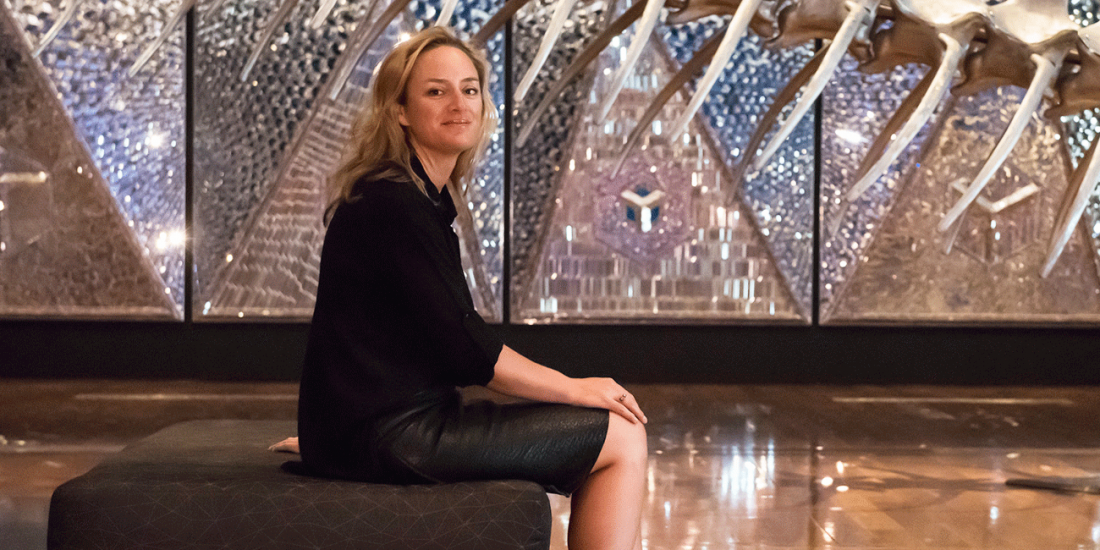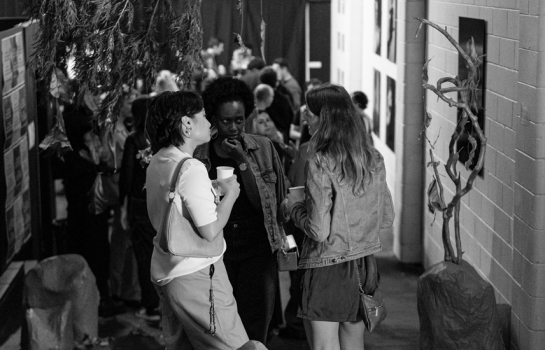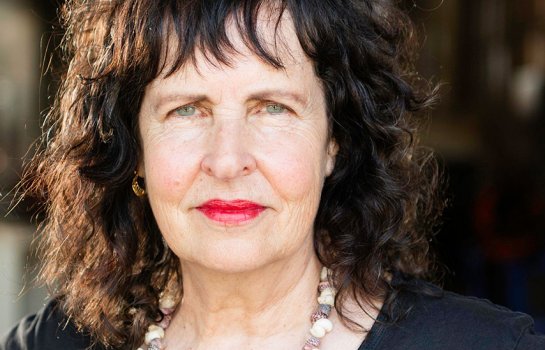Geraldine Barlow, Curator of International Art, QAGOMA
I try to bring together some ideas that we see more easily at a first glance with others that come through time.
For most of us regular uncultured humans, the vast world of international art is an intimidating expanse of creativity that few of us will ever comprehend. Thankfully, there are those out there that make it their life’s work to find the best art in the world to bring to the masses. Geraldine Barlow is one of these heroes. As curator of international art at QAGOMA, it’s Geraldine’s job to scour the globe for the latest trends and works to bring to the award-winning gallery’s walls. Geraldine is the curatorial mastermind behind GOMA’s current exhibition, Sugar Spin. We caught up with Geraldine to talk about the exhibition and how one even begins to sift through the world of international art.
Do you remember the moment you discovered your love for art?
I think a love of beauty came first! My mother tells me my first word was flower as I handed her a roots-and-all specimen. Both my mother and grandmother had a great appreciation of nature, beauty, pattern and art. Later my mother would take myself and my three siblings into the NGV in Melbourne on the train. We each got to choose a favourite work – I always found it hard to choose!
When did your passion turn into a desire to pursue a curatorial career, particularly in relation to international art?
I first chose to go to art school and train as an artist. It was a decision I was very nervous about when leaving school, but it also felt like the greatest personal challenge. The next challenge was getting a ‘real’ job to pay the bills. I was lucky enough to get a training role as a curatorial assistant at Heide. I loved the opportunity to work with many different artists, and bounce off the energy and ideas in their work. A few weeks into that role I had to call eminent American artist Barbara Kruger to discuss the exhibition we were planning. It was an amazing learning curve. I love working with Australian artists as much as international ones. The wonderful thing about international art is that it gives you license to be curious about everything.
Curator of International Art is a pretty important sounding title – especially since art around the world is so varied and nuanced. How do you keep track of the most interesting works and trends in the greater art scene?
My role is very much about balancing instinct and organisation. In some parts of your head (and filing system) you have lists and spreadsheets and you have to think about trends and shifts. But art is also emotional and at times quite mysterious, so you try and make room for a range of ways of processing information. Seeing as much artwork as possible is vital so that you can draw from a rich sense of what is happening and be a part of creating opportunities for artists as they grow. I like to try and keep an eye on what is happening outside the art world, which is not easy with so much going on, but I think it is important to think outside of our ‘tribe’ and be open to the larger pulse of the global conversation.
When it came time to plan Sugar Spin: you, me, art and everything, what did you originally want the exhibition to communicate to audiences?
Sugar Spin has to work between two ‘poles’, firstly to celebrate GOMA and the collection, bringing back a good number of much loved artworks. Secondly, and the largest challenge for me, was to really try and bring the show alive. I didn’t want it to feel like a familiar greatest hits list, so I played with juxtapositions of artworks and ideas, setting up layered narratives for people to explore, and shifts of scale, colour and texture. I was hoping the exhibition would communicate a sense of energy and excitement, but also unease – the spin.
In addition to brand-new works for GOMA, the exhibition features a number of large-scale visitor favourites. What was it like delving through the archives? Did you have a hard time deciding what to include?
It was such a joy to be able to look through our collection store, as well as talking with colleagues about their favourite works. I came to Brisbane from Melbourne 19 months ago, so I remember seeing some works in past exhibitions. The collection can be explored via our database, but I also very much enjoyed looking through the store rooms, turning on the lights in dark rooms, and rolling out racks of paintings. All these works are waiting for us, you turn on the lights and it feels as if they start to speak to you. Some of them you understand immediately, and others you think ‘I don’t get it, but I want to know more’. This part of the process is mysterious and wonderful, you feel you never get quite enough of it, and then you have hours and days of list wrangling and logistics meetings. Then I get to work with our conservators and exhibition designers, so that was fantastic as well.
We understand that each gallery throughout the exhibition was curated to have its own underlying theme. What was your process in pulling together such diverse works to create cohesion in each room?
Sometimes cohesion comes through something more obvious like a colour palette, or shared subject matter. In other instances I think it can come through a deliberate juxtaposition – for instance the gleaming silvery steel of Huang Yong Ping’s enormous serpent Ressort 2012, set against the watery deep blue carbon paper of Latifa Echakhch’s A chaque stencil une revolution 2007. I try to bring together some ideas that we see more easily at a first glance with others that come through time.
It might be tough to pick just one, but what artwork do you think is a must-see for any patrons coming to see the exhibition?
People are really loving Céleste Boursier-Mougenot’s work from here to ear (v.13) 2010. We worked with the Queensland Finch Society to realise it, 60 tiny finches ‘play’ the installation as if it were an instrument. As they fly about the room, from seed to water to nest they activate the instrument/installation. It feels as if we are hearing some kind of deeper ‘earth rhythm’ that we’ve always known is there but not been able to hear. It’s very beautiful and I love seeing people’s faces as they explore.
What do you hope visitors take away from experiencing Sugar Spin?
I hope people feel energised through seeing all these incredible works of art and sharing this experience with others.
At the centre of the exhibition, Nervescape V 2016 by Hrafnhildur Árnadóttir , or Shoppy, energises us with its massive waterfall of colourful hair, whilst offering a space in which we are all connected. We seek pleasure – the sugar – and yet we must also find our own centre of gravity, perhaps countering the spinning pace and confusion of this world.
What’s the best thing about being an art curator at a gallery such as GOMA?
I get to learn from amazing colleagues!
You can see Sugar Spin: you, me, art and everything up close at GOMA until Monday April 17. Make sure to catch it before it disappears.



